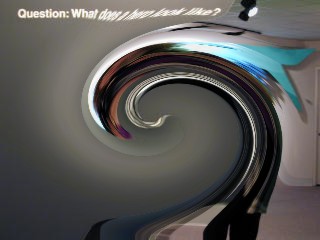
 |
 |
The
Tyranny (continued) |
|
We do not look at people we hate. We glance at them, we glare at them, but we do not really look. So we do not see their celestial side - we only catch glimpses of the cold clay, the material. That, my friend, is all a camera sees. Love is the easiest way to see the celestial self, but it is not the only way. Looking through love is easiest, because the lover returns your gaze fully and projects a sort of psychic two-way tractor beam. It's easiest to see the celestial side of a lover because he or she is more likely to help you out. That is why we find the world so beautiful when we are with our beloved. We are already opened to the celestial, and our two-way tractor beams are on. Have you ever heard someone say, "The camera loves her?" This description of the "photogenic" person reveals more than we might have thought. Or what about the photographer's direction to the model, "Make love to the camera"? A good photographer can fool the eye into seeing with emotion, or at least make the viewer share in whatever emotion the photographer felt. A photographer might also coax out the celestial light within someone, by making them smile a genuine smile, or by helping them to put out their two-way tractor beam and flash their celestial self. Some subjects do it naturally: like Marilyn Monroe. So much of her celestial self came through in her photographs that it feels as if they are still alive. It feels as if you could crawl down that two-way tractor beam and touch her. The problem with a camera is that it doesn't have a celestial self to project back. Imagine Marilyn, projecting that two-way tractor beam, again and again, giving her celestial self for the world to view, for the world to possess. What did she get back? Fame is hard enough on rock stars, who project their tractor beams on stage and draw on the thousands of beams directed back to them. (I believe I saw this once, during a Jazz Mandolin Project concert; but a certain shamanistic substance might have helped.) It's hard enough for a rock star to keep projecting the celestial self, and a rock star gets that energy back, times millions. But Marilyn, poor Marilyn. She met mostly with the cold camera's glare, and even though she undoubtedly got some tractor beam action from the photographers and lookers-on, there was no way she could get all her energy back. Because Marilyn, somehow, whether meaning to or not, had found a way to extend her two-way tractor beam right through the lens, the film, the negative, the print, right into the eyes of the viewer. |
 |
Back to Essay Index |